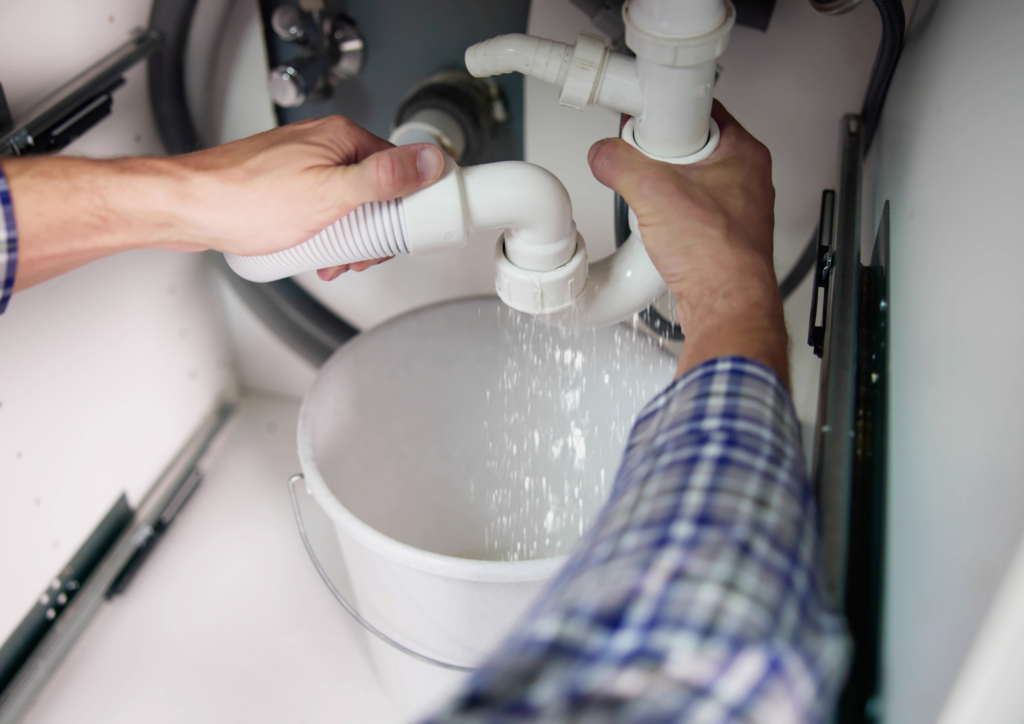Maintaining clean pipes free from calcium buildup is essential for ensuring a healthy plumbing system and prolonging the lifespan of your pipes. Calcium deposits, commonly known as limescale, can cause blockages and reduce water flow, leading to decreased efficiency and potential damage over time. By using eco-friendly cleaning methods, you not only protect your plumbing but also contribute to a greener, more sustainable environment by avoiding harsh chemicals. In this post, we’ll explore several natural and sustainable ways to keep your pipes in tip-top shape.
1. Use Vinegar and Baking Soda Method – Vinegar is a natural acid that effectively dissolves calcium deposits, making it a popular choice for many household cleaning tasks. Combined with baking soda, which acts as a gentle abrasive and deodorizer, this method offers a powerful yet eco-friendly solution for cleaning pipes.
Instruction:
- Turn Off the Water Supply:
Before starting, ensure you turn off the water supply to prevent any accidents and to allow the cleaning solution to work effectively. - Prepare the Mixture:
Mix equal parts vinegar and water in a container. For pipes with a stubborn buildup of calcium, you might consider using undiluted vinegar to boost its effectiveness. - Apply the Solution:
Pour the vinegar solution directly into the pipe if you can access it. This allows the acid to target the calcium deposits directly. - Allow Time to Work:
Let the solution sit in the pipe for at least 1-2 hours. During this time, the vinegar will gradually break down the calcium deposits. - Introduce Baking Soda:
After the vinegar has had time to work, add a generous amount of baking soda. The reaction between the vinegar and baking soda will create a foaming effect, which helps to further loosen any remaining deposits. - Flush with Hot Water:
Finally, flush the pipes with hot water. This step helps to clear out the loosened calcium and any residual cleaning agents, leaving your pipes clean and refreshed.
2. Try Lemon Juice Soak – Lemon juice is another natural acid, much like vinegar, and it’s equally effective at breaking down limescale. Additionally, it leaves behind a pleasant, natural scent and adds a bit of a fresh, citrusy boost to your cleaning routine.
Instruction:
- Direct Application:
Pour pure lemon juice into the pipe or directly onto the affected fixture. This method is especially useful for smaller areas or localized deposits. - Let It Sit:
Allow the lemon juice to work its magic for at least 2 hours. For more severe buildup, you might leave it overnight to ensure the acid has enough time to break down the limescale. - Flush Thoroughly:
After the soaking period, flush the pipes with hot water to wash away the loosened deposits and any remaining lemon juice.
3. Commercial Descaling Solutions – Sometimes, natural methods might not be enough for particularly stubborn or heavy calcium buildup. In these cases, commercial descaling solutions can be an effective alternative. The key is to choose products that are biodegradable or non-toxic, ensuring that your cleaning method remains eco-friendly.
Instruction:
- Read and Follow Instructions:
Carefully read the instructions provided on the product packaging. Generally, these products require you to pour the solution into the pipes and allow it to sit for a specified period. - Soak and Flush:
Once the recommended soaking time is complete, flush the pipes thoroughly with hot water to remove all traces of the descaling agent and any dissolved calcium.
4. Plumber’s Snake or Wire Brush – For severe clogs caused by heavy calcium buildup, a more mechanical approach might be necessary. A plumber’s snake or a flexible wire brush can physically break apart the deposits, making it easier for your cleaning agents to do their job afterward.
Instruction:
- Insert the Tool:
Carefully insert the plumber’s snake or wire brush into the pipe. Slowly maneuver the tool through the pipe to break up the buildup. - Supplement with a Cleaning Agent:
Once you’ve loosened the deposits, use vinegar or a commercial descaling solution to dissolve any remaining calcium. - Rinse Thoroughly:
Finish by rinsing the pipe with hot water to ensure all debris and residues are completely cleared out.
5. Water Softener- While regular cleaning methods address existing calcium deposits, preventing future buildup is just as important. A water softener is an excellent long-term solution that reduces the levels of calcium and magnesium in your water. By softening the water, you significantly decrease the chances of limescale forming in your pipes.
Instruction:
- Consider Installation:
Consult with a professional to determine the right type of water softener for your home’s water system. Installation may require professional expertise, but it is a worthwhile investment for long-term maintenance. - Regular Maintenance:
Once installed, ensure that you follow the manufacturer’s guidelines for regular maintenance to keep the water softener functioning efficiently.
By adopting these eco-friendly methods to clean your pipes, you not only maintain an efficient and healthy plumbing system but also contribute positively to the environment. Whether you opt for natural solutions like vinegar, baking soda, and lemon juice or choose to install a water softener, each step plays a crucial role in preventing and eliminating calcium buildup. Embrace these green cleaning techniques and enjoy the dual benefits of pristine pipes and a sustainable home environment.
















